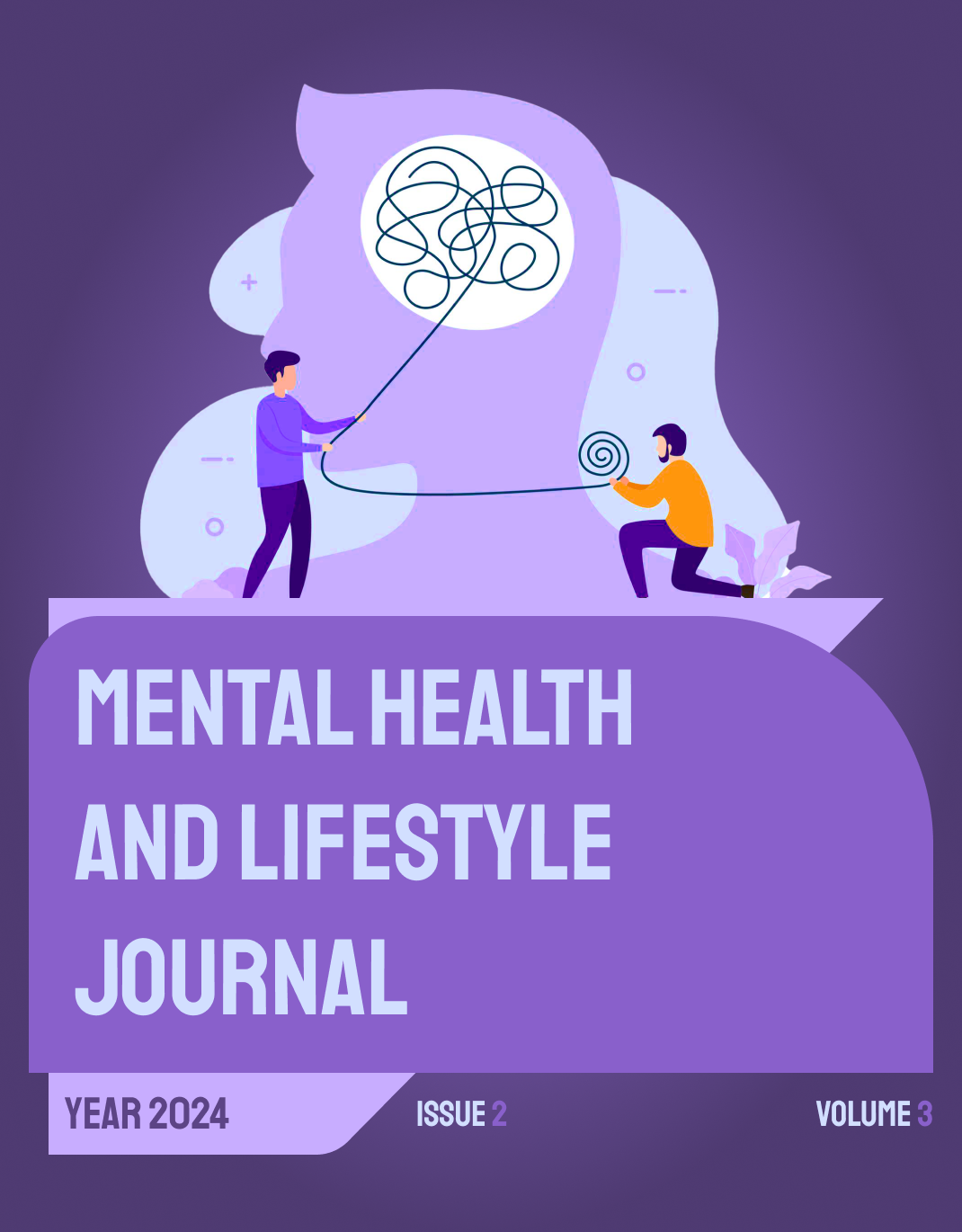The Effect of the Pennsylvania Resilience Intervention on Hope and Marital Burnout in the Wives of Incarcerated Individuals with Substance Dependence
Keywords:
Resilience, Hope, Burnout, Women, Incarceration, Substance AbuseAbstract
Psychological problems in women whose spouses are incarcerated can have significant adverse impacts on their lives. This study aimed to examine the effect of the Pennsylvania Resilience Intervention on hope and marital burnout in the wives of incarcerated individuals with substance dependence. The research employed a quasi-experimental method with a pre-test–post-test control group design. The study population consisted of all women whose husbands were incarcerated due to substance dependence and who were supported by the Prisoners’ Support Association in Ardakan during the 2023–2024 academic year. In total, 34 individuals were selected through convenience sampling and randomly assigned to two groups of 17 participants each: an experimental group and a control group. The research instruments included the Hope Scale (Snyder, 1991) and the Marital Burnout Questionnaire (Pines, 1996). The experimental group received the Pennsylvania Resilience Program across ten 120-minute sessions, while the control group received no intervention. Data were analyzed using multivariate analysis of covariance (MANCOVA). Statistical computations were conducted using SPSS version 26. The results showed no significant differences between the two groups regarding demographic variables such as age, education, and employment status (p > .05). The analysis of covariance revealed that the Pennsylvania Resilience Intervention had a significant effect on hope (F = 28.149, p < .001) and marital burnout (F = 6.418, p < .017) in the wives of incarcerated individuals with substance dependence. Enhancing resilience is essential for improving life challenges and psychological well-being components. Therefore, the Pennsylvania Resilience Intervention can be considered a promising approach to increasing hope and reducing marital burnout among this population.
Downloads
References
1. Daquin JC, Clipper SJ, Rude A, Daigle LE. Family incarceration and prison adaptation: Investigating the impact of family incarceration history on prison misconduct. Journal of Criminal Justice. 2023:102031. doi: 10.1016/j.jcrimjus.2023.102031.
2. Tadros E, Fahmy C, Jordan SS, Guajardo A. Self-efficacy, goal orientation, and relationship ideologies among incarcerated men and their romantic partners. Crime & Delinquency. 2023:00111287231194716. doi: 10.1177/00111287231194716.
3. Shomali Ahmadabadi M, Barkhordari Ahmadabadi A. The effectiveness of the Pennsylvania resilience program-based intervention on parental burnout and child abuse resulting from the COVID-19 pandemic in mothers of first-grade elementary school students. Journal of Excellence in Counseling and Psychotherapy. 2022;11(43):39-51.
4. Shomali Ahmadabadi M, Barkhordari Ahmadabadi A. The effectiveness of the Pennsylvania resilience training program on mental distress and life satisfaction of women with imprisoned spouses dependent on substances. Addiction Research. 2023;17(68):279-302.
5. Shomali Ahmadabadi M, Zabihi M, Dastjerdi G, Movahedian Z, Heidari Khormizi SM, Ahmadi Mehrabadi SR, et al. Comparing the simultaneous prescription of methadone with sertraline or venlafaxine on mental health indicators of substance abuse patients: A clinical trial. Journal of Qom University of Medical Sciences. 2022;16(8):654-63. doi: 10.32598/qums.16.8.2639.1.
6. Moore HD. Prison wife stigma: An exploration of stigma by affiliation and strategic presentation of self: Kansas State University; 2016.
7. Williams SN. The Negative Health Consequences for and Impacts of Incarceration on Partners and Children: Predicting Greater Negative Impact and More Harmful Mental Health Consequences for Partners of the Incarcerated: Teachers College, Columbia University; 2023.
8. Snyder CR. Handbook of hope: Theory, measures, and applications: Academic press; 2000.
9. Snyder CR, Harris C, Anderson JR, Holleran SA, Irving LM, Sigmon ST, et al. The Will and the Ways: Development and Validation of an Individual-differences Measure of Hope. Journal Personality Social Psychology. 1991;60(4):570-85. doi: 10.1037/0022-3514.60.4.570.
10. Ghaniei R, Rezapour Mirsaleh Y, Choobforoush Zadeh A, Kohestani F. The structural relationship of emotional expression in the family, psychological acceptance, and feelings of inferiority with hope for life in adolescents from low-income families. Positive Psychology Research. 2022;8(3):81-98.
11. Harley D, Hunn V. Utilization of Photovoice to Explore Hope and Spirituality among Low-income African American Adolescents. Child and Adolescent Social Work Journal. 2015;32(1):3-15. doi: 10.1007/s10560-014-0354-4.
12. Omeje GN, Ede MO, Amadi K, Ogbueghu SN, Chinweuba NH, Obeagu EI, et al. Intervention for burnout and irrational beliefs in parents of couples seeking a divorce: A critical reflection of Igbo-African marital discord. Medicine. 2023;102(27):e34221. doi: 10.1097/MD.0000000000034221.
13. Maslach C, Jackson SE, Leiter MP. Maslach burnout inventory: Scarecrow Education; 1997.
14. Koutsimani P, Montgomery A, Georganta K. The relationship between burnout, depression, and anxiety: A systematic review and meta-analysis. Frontiers in psychology. 2019;10:284. doi: 10.3389/fpsyg.2019.00284.
15. Platsidou M, Daniilidou A. Three scales to measure burnout of primary school teachers: empirical evidence on their adequacy. International Journal of Educational Psychology. 2016;5(2):164-86. doi: 10.17583/ijep.2016.1810.
16. Faraji JD, Namvar H, Sanaei B. Investigating the factors affecting marital burnout of couples in Tehran. Islamic Lifestyle with an Emphasis on Health. 2021;5(1):47-60.
17. Smaeeli Far N, Jayervand HA, Rasoli M, Hasani J. A Grounded-Theory Study of the Underlying Factors of Couple Burnout. Women Studies. 2019;10(27):25-51.
18. Alipour S, Heidari Nasab L. The role of perceived stress in marital burnout with regard to the mediating role of ego strength and mindfulness. Clinical Psychology and Personality. 2024;22(2):35-52.
19. Wei Y, Li Z, Guo L, Zhang L, Lian C, Yuan C, et al. The Moderating Role of Family Resilience on the Relationship between COVID-19-Related Psychological Distress and Mental Health among Caregivers of Individuals with Eating Disorders in Post-Pandemic China. International Journal of Environmental Research and Public Health. 2023;20(4):3417. doi: 10.3390/ijerph20043417.
20. Perez E. The Effect of a Resiliency Program on Psychological Well-being and Resilience of Miami-Dade Firefighters: A Quality Improvement Project, Advancing Digital Health & Open Science. 2022;11(1):e34033.
21. Fullerton DJ, Zhang LM, Kleitman S. An integrative process model of resilience in an academic context: Resilience resources, coping strategies, and positive adaptation. Plos one. 2021;16(2):e0246000. doi: 10.1371/journal.pone.0246000.
22. Stoliker BE, Vaughan AD, Collins J, Black M, Anderson GS. Building personal resilience following an online resilience training program for bscn students. Western Journal of Nursing Research. 2021;11(6):19-28.
23. Luo Y, Xia W, Cheung AT, Ho LLK, Zhang J, Xie J, et al. Effectiveness of a mobile device-based resilience training program in reducing depressive symptoms and enhancing resilience and quality of life in parents of children with cancer: randomized controlled trial. Journal of medical Internet research. 2021;23(11):226-39. doi: 10.2196/27639.
24. Dastani M, Abdoljabari M, Jamshidi MA, Farhush M, Farhush M. The effectiveness of religious cognitive-behavioral therapy compared to traditional cognitive-behavioral therapy on improving affect and hope in patients with major depression. Journal of Research in Psychological Health. 2023;8(4):113-28.
25. Emami M, Askarizadeh G, Fazilatpour M. The effectiveness of group stress management therapy using cognitive-behavioral methods on resilience and hope in women with breast cancer. Positive Psychology Research. 2017;3(4):1-14.
26. Guler M, Bozkur B, Guler HA. Parent resilience, couple burnout, and misogyny in fathers with disabled children. Psihologija. 2024;(00):3-. doi: 10.2298/PSI220919003G.
27. Parvaneh A, Khaftan P, Khaneyei D, Saghezi A. The effectiveness of resilience training on improving the quality of life and psychological hardiness of female heads of households. Journal of Applied Research in Counseling. 2020;3(3):1-16.
28. Bazargan A, Sarmad Z, Hejazi E. Research methods in behavioral sciences. Tehran, Iran: Agah Publications; 1998.
29. Bijari H, Ghanbari Hashemabadi B, Aghamohammadian Sharbaf HR. Investigating the effectiveness of group therapy based on the hope therapy approach on increasing the hope for life in women with breast cancer. Educational and Psychological Studies. 2009;10(1):172-84.
30. Zahedbabelan A, Ghasempour A, Hasanzadeh S. The role of forgiveness and psychological hardiness in predicting hope. Knowledge & Research in Applied Psychology. 2011;12(3 (Serial 45)):12-9.
31. Zali Z, Ahmadi S, Sarami GR. The mediating role of marital forgiveness in the relationship between psychological hardiness and marital burnout. Family Pathology. 2019;5(1):107-24.
32. Khanjani M, Shahidi S, Fathabadi J, Shokri O, Mazaheri MA, Rahiminezhad SP. The effectiveness of the Pennsylvania resilience program on reducing symptoms of depression, anxiety, stress, and maladaptive attitudes and increasing optimism in students. Journal of Applied Psychology. 2015;9(1):19-35.
33. Mozaffari Motlagh MR, Nejat H, Tuzandehjani H, Samari AA. The effectiveness of cognitive-behavioral therapy integrated with mindfulness on reducing cancer pain in patients with breast cancer. Iranian Journal of Breast Disease. 2020;13(1):35-45. doi: 10.30699/ijbd.13.1.35.
34. Yan W, Huang Q, Wang Y, Ni Z, Peng K, Zhang P. Hope as the Mediator in the Relation Between Resilience and Life Satisfaction among Tibetan Orphans. SAGE Open. 2024;14(2):21582440241252003. doi: 10.1177/21582440241252003.
35. Dadashi Haji M, Moghadam AR, Haji Agha Nejad Y. Investigating the effectiveness of family resilience training on life satisfaction and marital satisfaction of military families. Defense Human Capital Management. 2021;1(3):171-91.
Downloads
Published
Submitted
Revised
Accepted
Issue
Section
License

This work is licensed under a Creative Commons Attribution-NonCommercial 4.0 International License.










